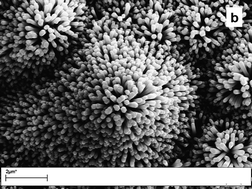A simple and effective approach to fabricate extensive 3D ZnO nanoarchitectures on alkaline etched (100) Si substrates is presented. Textured silicon micropattern drives ZnO 1D growth on all the {111} exposed faces, resulting in sea sponge-likeZnO nanoarchitectures. The obtained 3D nanostructured ZnO is the result of a perfectly ordered array of continuous and crystalline ZnO nanorods, grown on the silicon pyramid {111} faces. The substrate orientation and the relative roughness, intrinsically derived by the alkaline silicon texturization, drive the preferential growth of one-dimensional ZnO nanorods. The ZnO nanorods photoluminescence spectra show, at room temperature, a narrow ultraviolet (UV) emission peak at 3.28 eV and a broad unstructured green band emission at 2.57 eV. These luminescence emissions are attributed to the near band-edge exciton transitions and to the defect emission, respectively. This original approach to fabricate high surface area ZnO nanoarchitectures presents the advantages of well established and reproducible methodologies of semiconductors industrial manufacturing (silicon micromachining and chemical vapor deposition), thus representing an easy scaling up solution to fabricate new ZnO-based nanomaterials.

You have access to this article
 Please wait while we load your content...
Something went wrong. Try again?
Please wait while we load your content...
Something went wrong. Try again?


 Please wait while we load your content...
Please wait while we load your content...